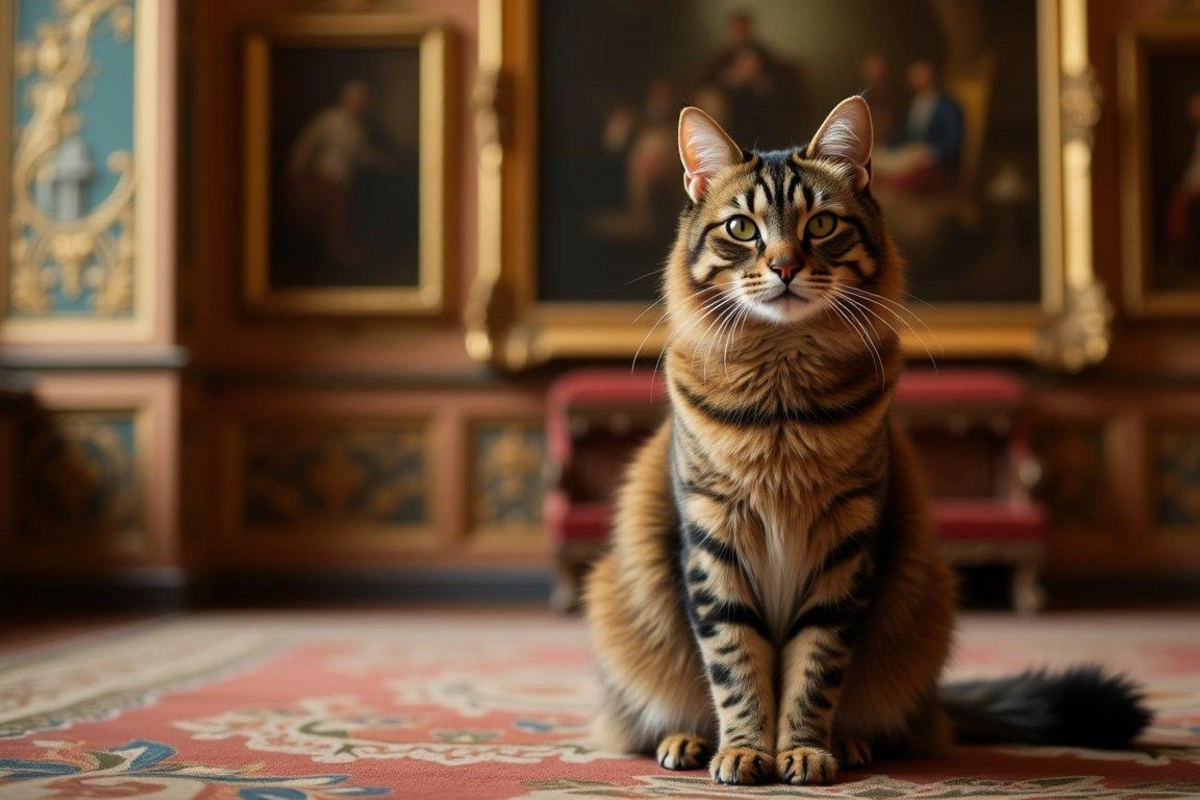Fluffy Guardians of the Hermitage: The History of Cats Protecting the Museum

Did you think that only exhibits inhabit the Hermitage? In the basements, corridors, and secret corners of the museum live about 50 cats - fluffy aristocrats affectionately called "Ermiks" or "Ermits." These cats don't just decorate the museum but also fulfill an important mission, protecting the priceless heritage from mice. Each of them has their own story, character, and some have even become real celebrities.
Subscribe to the channel - there's much more interesting content ahead!
How cats became part of the Hermitage
The tradition of keeping cats in the museum began during the time of Peter the Great. He was the one who brought the first cat from Holland to the Winter Palace to fight mice. But the real status of feline employees was established by Catherine the Great.
After discovering that rats were threatening the exhibits, the empress issued a decree: to deliver the best mousers from Kazan to St. Petersburg. Thus, 30 large cats arrived at the Winter Palace and were officially enrolled as "guards of the picture galleries."
The cats were maintained at the highest level: they were fed with black grouse and hazel grouse - each cat was entitled to a whole bird per day! Catherine divided them into two types: "indoor" cats guarded the ceremonial halls and could enter the empress's chambers, while "outdoor" cats worked in the basements, fighting rodents in harsher conditions.
Cats during the Siege
The Siege of Leningrad became a severe trial for the Hermitage cats. Many of them did not survive in the conditions of hunger. But their disappearance led to a new disaster: the city was flooded with rats that destroyed food and spread diseases.
As soon as the blockade weakened, cats were urgently brought to Leningrad from Siberia and Yaroslavl - thousands of animals, of which 200 were sent to the Hermitage. The new fluffy defenders quickly dealt with the rodent invasion, returning safety to the museum.
In memory of this feat, monuments to the hero cats - Elisey and Vasilisa - were erected on Malaya Sadovaya Street in St. Petersburg.
Where do the Ermiks live?
The Hermitage cats are not just stray animals, but real employees with a clear schedule. Their main territory is the Great Cat Basement, which stretches for 20 kilometers. Some cats work only there, while others go up to the utility rooms of the museum.
All conditions are created for them: cozy beds, food bowls, and regular care. At the same time, the Hermitage budget is not spent on cats - their maintenance is paid for by donations, staff funds, and the Friends of Hermitage Cats Foundation.
Each cat is entered in a special Record Book indicating their name, habits, and path to the museum. After several years of service, they retire: they are taken into families or sent to the Cat Museum, where they rest in well-deserved peace.
Legends and stars of the Hermitage cats
Each cat in the Hermitage is a small legend. For example, the cat Masha made her way from Moscow to Anapa, but somehow ended up at the walls of the Winter Palace and was accepted into the staff.
The cat Van Dyck got his name after getting stuck in the ventilation of the Van Dyck hall, frightening visitors. And the cat Martha, who survived injuries and illnesses, found a second life thanks to the care of the staff.
A special place is occupied by Achilles - a white oracle cat who predicted the outcomes of World Cup football matches. His accurate forecasts made him a star far beyond the museum.
Hermitage Cat Day
The Hermitage cats have their own holiday - Hermitage Cat Day. On this day, parades, competitions, and exhibitions are organized. Children can interact with the fluffy guards, and adults can learn their stories.
The celebration extends beyond the museum walls: Konnogvardeysky Lane turns into Kotogvardeysky (
Similar News
A simple way to improve mood for women has been named
Japanese scientists found that during a run, music with a pronounced rhythm increases speed and improves mood in women. As BAKU.WS reports, the work was publish...




 Azərbaycanca
Azərbaycanca  По-русски
По-русски  English
English 





